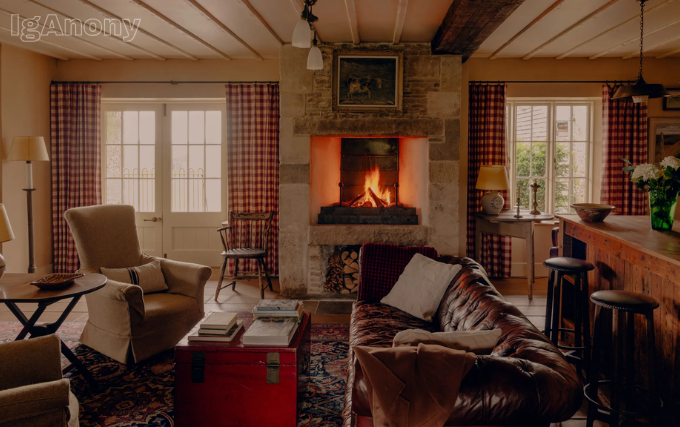British winters can feel particularly long and demanding. Cold temperatures, short daylight hours, and frequent grey skies affect how we live and how our homes perform. A well-designed home can transform the darker months into a more comfortable and even enjoyable experience. Insulation, glazing, and thoughtful layouts all contribute to warmth and brightness, while specific design features help combat the seasonal challenges unique to the UK climate.
Designing for winter comfort means more than just turning up the heating. It involves making choices that retain warmth, increase natural light, and create a sense of wellbeing indoors. Homes built or adapted with these elements in mind provide comfort, energy efficiency, and resilience throughout the colder season.
Harnessing Natural Light to Brighten Winter Living
One of the greatest challenges in winter is the lack of natural daylight. Homes can feel dim and enclosed with the sun sitting lower in the sky and setting early. Maximising the light that does reach interior spaces makes a noticeable difference to mood and energy levels.
Positioning windows and doors on the south side of a property captures more of the available light. Large glazed areas allow sunlight to filter deeper into living spaces, reducing the need for artificial lighting. The effect is visual and thermal, as sunlight naturally warms walls and floors. Choosing the right surfaces, such as lighter colours for walls and reflective finishes for furnishings, can further spread natural light throughout the home.
This is also where quality bifold doors make a significant impact. They open up wide sections of wall to the outside world while still offering strong insulation when closed. Even during short winter days, these doors help bring more daylight into main living areas, making them feel larger, brighter, and more welcoming.
Furniture arrangement also plays a part. Positioning seating close to windows or glazed doors helps people benefit from daylight and outdoor views. Avoiding tall, bulky items that block light ensures that rooms feel more open and balanced, which is especially valuable during darker months.
Energy-Efficient Glazing for Comfort and Warmth
Windows and doors play a crucial role in retaining heat. Poorly performing glazing often allows warmth to escape quickly, leaving rooms colder and heating systems working harder. Advances in glazing technology have provided solutions that make it possible to enjoy large window and door openings without sacrificing comfort.
Double glazing remains one of the most effective ways to keep heat inside, using two panes of glass with an insulating space between them. Triple glazing adds an extra layer of protection and can help keep temperatures more stable in the coldest parts of the country. Alongside these systems, aluminium frames with thermal breaks provide additional resistance against heat loss, ensuring the warm air stays inside even during frosty conditions.
Specialised coatings, such as Low-E glass, further improve performance by reflecting heat back into the room while still allowing sunlight through. These small details combine to create rooms that feel noticeably warmer and more stable in temperature. Instead of quickly losing heat through windows, it remains within the home, creating consistent comfort.
Zoning Homes for Efficient Heating
Heating the entire house at once can be costly and unnecessary, especially when only certain rooms are used regularly. Zoning provides a practical solution by directing warmth to the spaces that need it most. This approach not only reduces energy waste but also keeps households more comfortable.
Open-plan designs are visually appealing but can be harder to heat. Simple design adjustments, such as dividing the space into smaller sections with shelving or furniture, help retain warmth in key areas. Rooms positioned centrally or facing south tend to hold heat more effectively, so designating these as main living areas during winter can improve comfort.
Another effective strategy is creating buffer zones. Hallways, porches, and utility rooms can act as barriers to keep the cold from flowing directly into living spaces. Sealing internal doors and adding draught strips reduces heat loss at entry points, keeping the core rooms warm and efficient.
Extending Living Spaces into the Outdoors
Even in winter, outdoor areas can play a role in wellbeing. Conservatories, sunrooms, or covered patios provide a way to enjoy fresh air and outdoor views while staying sheltered from cold, wind, and rain. These spaces act as transitional areas, blending indoors with outdoors without losing warmth.
Bifold doors are beneficial in this setting. They create flexible boundaries between interior and exterior spaces. On bright winter days, they can be opened to let in fresh air, while on colder evenings, they remain tightly sealed to keep the warmth inside. Many designs now incorporate vents or adjustable openings allowing controlled airflow without letting in draughts.
Outdoor living can also be extended with heating solutions such as sheltered patios or fire pits. These additions allow households to continue enjoying outdoor time even in the colder months, turning gardens and terraces into year-round features rather than seasonal ones.
Additional Design Features for Winter Wellbeing
The combination of warmth, light, and functionality shapes how comfortable a home feels in winter. Beyond windows and doors, insulation in walls and roofs and underfloor heating create a steady baseline of warmth. Smart home technology can further improve efficiency by adjusting heating to the household’s daily rhythm.
Materials also matter. Using natural finishes such as wood helps interiors feel warmer, while soft furnishings and textiles add comfort layers. Thoughtful lighting design ensures that evenings feel bright and inviting, countering the long hours of darkness. Together, these choices create homes that do more than provide shelter; they actively support wellbeing.
Create a Home That Works for Winter
British winters bring unique challenges, but homes can become places of comfort, light, and warmth with the right design features. Each choice contributes to resilience and wellbeing, from glazing that retains heat to flexible doors that brighten interiors. Investing in thoughtful improvements ensures that the colder months are endured and enjoyed.
Now is the time to explore upgrades that improve comfort and efficiency while enhancing everyday living. A home designed for winter not only supports warmth and light but also becomes a more welcoming space throughout the year.







